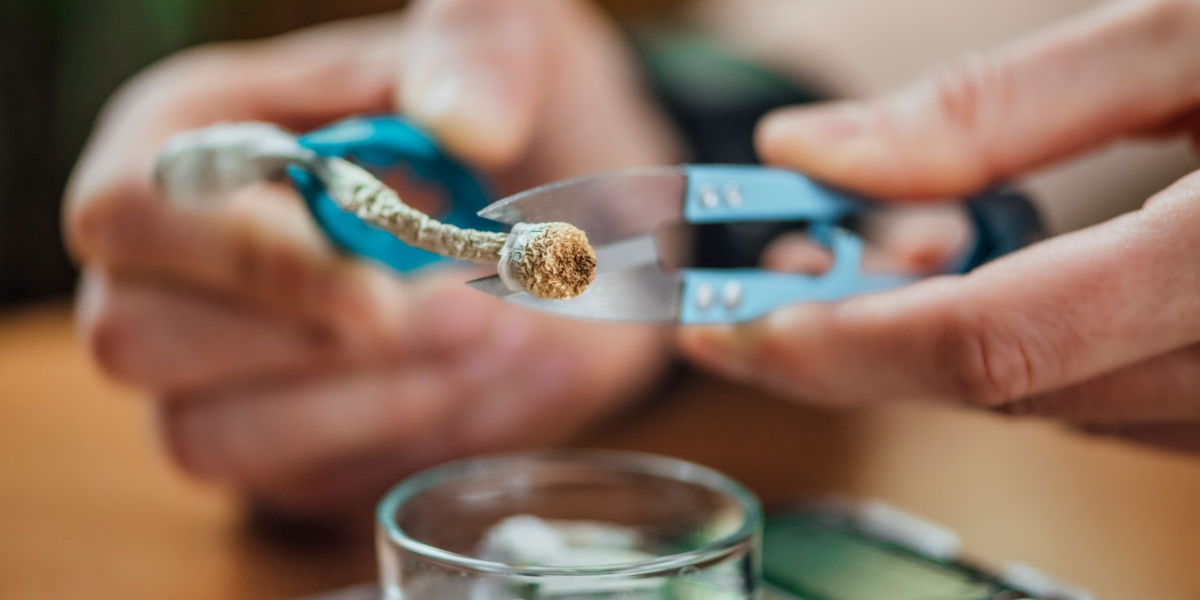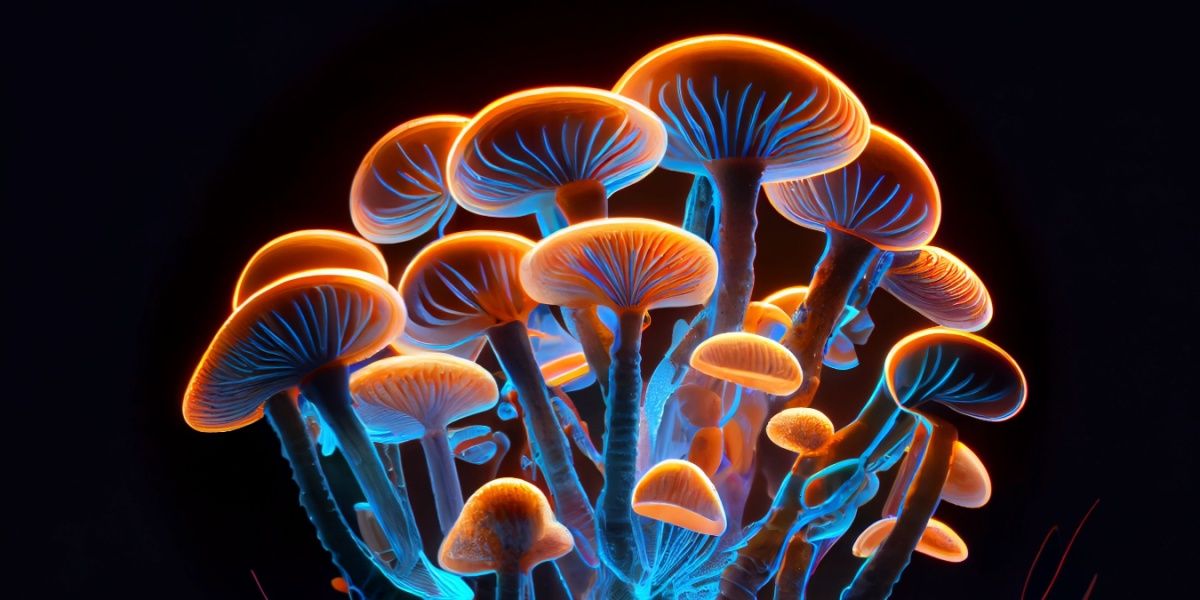Psilocybin mushrooms, otherwise known as magic mushrooms, are popular recreational hallucinogens that have more recently come into focus for their potential to treat a range of physical and mental illnesses. There is emerging evidence that psychedelic-assisted treatments may benefit individuals with depression, anxiety, or alcohol use disorder.[1]
However, relatively little is known about the growing practice of microdosing psilocybin. This article explores the current research and provides practical advice on microdosing safety.
This information is not intended to replace professional medical advice. If you are considering using psilocybin, speak to your healthcare provider.
- Microdosing psilocybin involves taking small amounts that avoid hallucinogenic effects, with some reporting benefits for mood and mental health.
- Research on microdosing's effectiveness is limited and mixed, highlighting the need for further study.
- Harm reduction strategies, including medical consultation, are essential for safer psilocybin use.

Why do people microdose psilocybin?
People microdose psilocybin for a wide variety of reasons. In contrast to regular dosing, the aim of microdosing is not to experience associated changes in perception (commonly referred to as a “trip”) that larger doses oftern cause.
One 2024 news article asked a group of UK mothers about their motivations for microdosing. They describe using psilocybin to feel less anxious, calmer, and happier, aiming to ease the stresses of modern life. Others seek to try microdosing as an alternative therapy for the treatment of common mental health conditions or chronic pain when conventional medications have failed. [2][3]
People consume psilocybin in several ways, including fresh, dried, edibles, or in tea.
What is a microdose of psilocybin?
There is no standard definition of a psilocybin microdose. However, researchers have suggested that around 1/10th of a full dose of psilocybin (the amount usually required to experience a “trip”) could be considered a microdose. This equates to between 0.43 and 0.73mg per microdose.[4]
Unfortunately, these tiny amounts can be very challenging to measure outside of a laboratory setting. This is further complicated by variations in psilocin (the active hallucinogenic compound) content between different species of magic mushrooms.[4]
A brief history of medicinal psilocybin use
Evidence of psychedelic mushroom use in Mesoamerica dates back to around 3000 BC. Ritual and medicinal use has continued amongst communities and healers to this very day. The Mazatec culture, centered around the Oaxaca region of Mexico, is most closely associated with our perception of therapeutic psilocybin use.[5][6]
The travel writings of Gordon Wasson in the 1950s are credited with the popularization of psilocybin tourism and the eventual introduction of magic mushrooms into Western cultures. Wasson describes “splendid visions” brought on by the consumption of psilocybin in a ritual led by famed Mazatec healer María Sabina.[6]
From the late 1950s onwards, research into the medicinal qualities of psilocybin took off. However, this progress swiftly halted in response to the U.S. War on Drugs of the late 1960s. It has only been over the last 10-15 years that psilocybin research has begun to get started again.[7]
Microdosing psilocybin and therapy
Although the current evidence for psilocybin microdosing is limited, some key studies are worth discussing.
One 2019 systematic review examined the early evidence for psilocybin microdosing benefits and limitations. Many anecdotal reports of positive experiences were highlighted. However, the researchers emphasized the need for further research into the potential risks of this therapy.[8]
A 2022 observational study noted a moderate improvement in mood and general mental health symptoms for individuals microdosing psilocybin for 30 days. However, as participants were aware that they were trying a microdosing therapy, the placebo effect (where individuals report symptom improvement not due to the active substance but rather as a result of the brain’s expected response to a treatment it perceives as effective) cannot be ruled out. [9]
Another 2022 double-blind placebo-controlled trial questioned anecdotal evidence of the benefits of microdosing. They reported no significant improvement in creativity, mental agility, physical activity, mental health, or well-being. [10]
Finally, a 2023 case series discussed the significant pain-relieving effects of microdosing psilocybin reported by 3 individuals with chronic pain. [11]
Overall, the current evidence for the effectiveness of microdosing is mixed. However, many people are indeed reporting positive effects from this therapy.
Is it safe to microdose psilocybin without supervision?
In short, microdosing psilocybin is safe… until it’s not. Like anything, there is a certain amount of risk that must be considered when deciding to take magic mushrooms. In low doses, most people report neutral or positive effects when microdosing psilocybin. [7]
However, without appropriate medical supervision, there is a potential for harm. Without access to a regulated supply of psilocybin, there is a possibility of accidentally taking too high a dose and experiencing a traumatic “trip.” In controlled environments, healthcare professionals can support and treat individuals experiencing adverse effects.[7][12]
Furthermore, the accurate identification of mushrooms is a highly specialized skill. Consuming the wrong mushroom can cause severe liver damage, seizures, or even death. This is a crucial risk to understand.[7]
Risks associated with psilocybin misuse
It is important to be aware of some key risks associated with psilocybin misuse:
- Bad trips - Occasionally, people will experience frightful alterations in perception when taking psilocybin. Intense feelings of fear and paranoia can accompany this.
- Worsening of existing mental health conditions - Psilocybin can potentially trigger mania or psychosis in individuals who suffer from conditions such as bipolar disorder and schizophrenia.
- Hallucinogen persisting perception disorder - This is a rare complication of psilocybin use where people experience ongoing alterations in perception or visual hallucinations.
- Unknown content - If psilocybin is obtained illegally, there is a possibility that mushrooms may be cut with other harmful substances.
According to the 2021 Global Drug Survey, magic mushrooms are one of the safest recreational drugs, with individuals taking them having the lowest rates of seeking emergency medical treatment, as compared to other substances. [13]
Safety and harm reduction tips for microdosing psilocybin
We do not advocate for, promote, or recommend the use of illicit substances in any way. However, we believe those who do should be able to access information to reduce harm and experience these substances as safely as possible.
If you choose to microdose psilocybin, here are some helpful tips to reduce the potential for harm:
- Sober friend - The best practice for taking psychoactive substances always involves designating a sober friend to have oversight during substance use. If you are intending to regularly microdose, this may not be practical. At the very least, you should aim to be supervised when microdosing psilocybin for the first time.
- Safe environment - Ensure any potential risks are managed before taking psilocybin. You should avoid driving and operating heavy machinery.
- Verify the substance - Try to acquire psilocybin from a reputable source. In jurisdictions where psilocybin can be used legally, this should be from a regulated seller.
- Talk to your doctor - Discuss your intention to microdose psilocybin with your physician. They can advise you on any risks specific to your medical history, including interactions with other prescribed medications.
Is there a risk of developing an addiction to microdosing psilocybin?
Research suggests that psilocybin has a very low potential for addiction. Magic mushrooms do not trigger the usual brain pathways and neurotransmitters implicated in chemical addiction. Psilocybin stays in your system for a relatively short time, and the effects of repeated use of psilocybin seem to wear off after just 3 days. However, addiction is always a risk associated with psychoactive substances.[14]
There is also a slight potential for behavioral addiction when microdosing psilocybin. People who microdose may seek to increase the amounts consumed if they do not notice a continued positive effect. It is essential that dosing is appropriately controlled to avoid this happening.
Is there anyone who shouldn't microdose psilocybin?
Although microdosing magic mushrooms may be generally safe, there are a few groups for whom this is not recommended:
- Individuals with a pre-existing history of specific mental health conditions: Psilocybin can potentially trigger mania or psychosis in people with bipolar disorder or schizophrenia.
- Under 18 years old, pregnant, or breastfeeding: There is a lack of reliable studies exploring the safety of consuming psilocybin in these groups.
- Previous negative experience with psilocybin: People prone to experiencing “bad trips” are likely to have continued negative experiences with psilocybin use.
Microdosing psilocybin resources
To learn more about microdosing psilocybin, take a look at the following resources:

-person-thumbnail.jpg?v=1758880627)

-guide-detail.jpg?v=1722503388)
